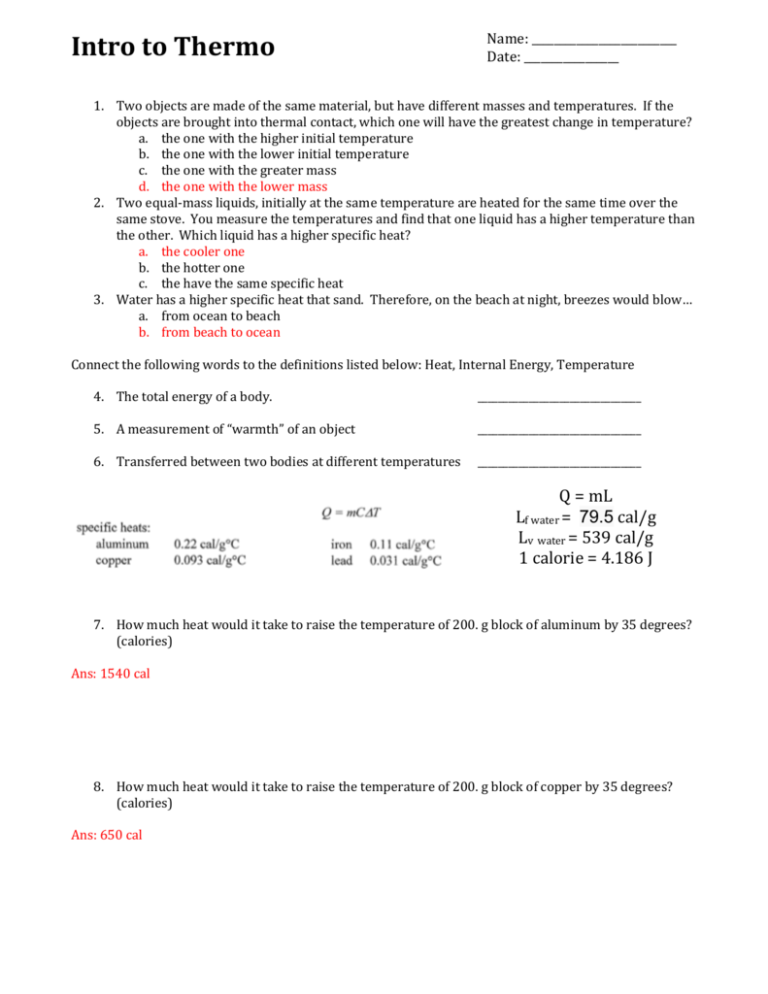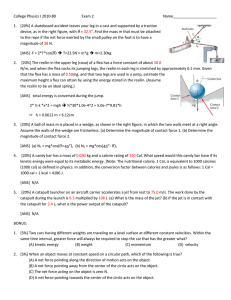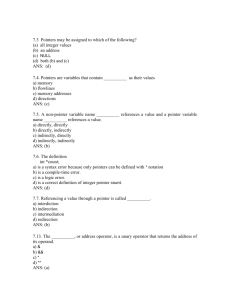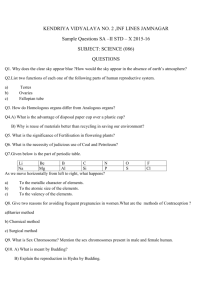Worksheet - Intro to Therm ANS
advertisement

Intro to Thermo Name: __________________________ Date: _________________ 1. Two objects are made of the same material, but have different masses and temperatures. If the objects are brought into thermal contact, which one will have the greatest change in temperature? a. the one with the higher initial temperature b. the one with the lower initial temperature c. the one with the greater mass d. the one with the lower mass 2. Two equal-mass liquids, initially at the same temperature are heated for the same time over the same stove. You measure the temperatures and find that one liquid has a higher temperature than the other. Which liquid has a higher specific heat? a. the cooler one b. the hotter one c. the have the same specific heat 3. Water has a higher specific heat that sand. Therefore, on the beach at night, breezes would blow… a. from ocean to beach b. from beach to ocean Connect the following words to the definitions listed below: Heat, Internal Energy, Temperature 4. The total energy of a body. ________________________________ 5. A measurement of “warmth” of an object ________________________________ 6. Transferred between two bodies at different temperatures ________________________________ Q = mL Lf water = 79.5 cal/g Lv water = 539 cal/g 1 calorie = 4.186 J 7. How much heat would it take to raise the temperature of 200. g block of aluminum by 35 degrees? (calories) Ans: 1540 cal 8. How much heat would it take to raise the temperature of 200. g block of copper by 35 degrees? (calories) Ans: 650 cal 9. Which block, Al or Cu, in the above 2 questions requires more heat? Why? Ans: It requires more heat because it had a higher specific heat. 10. 200. grams of aluminum and 200. grams of copper are melted, mixed together, and allowed to solidify. How much energy is needed to raise the temperature of cupper and aluminum alloy by 35 degrees? Ans: Q = QAl + QCu = 2191 cal 11. How much heat is required to raise the temperature of a 2.00 kg aluminum (c = 900. J/kgoC) vat filled with 20.0 kg of alcohol ( c = 2400 J/kgoC) from10.0o C to 75.0o C? Ans: 3.24 MJ 12. A hot piece of lead with a mass of 250 g is added to 500. g of water at a temperature of 60.0o C. If the final temperature of the solution is 68 degrees, what was the initial temperature of the lead? Ans: Q = mCΔT ; T2 = 440o C 13. How much heat must be added to 150. g of ice at -10.0o C to evaporate? Q = Q-10 -> 0 + QS-> L + Q0 -> 100 + QL->g Ans: 109 kcal











